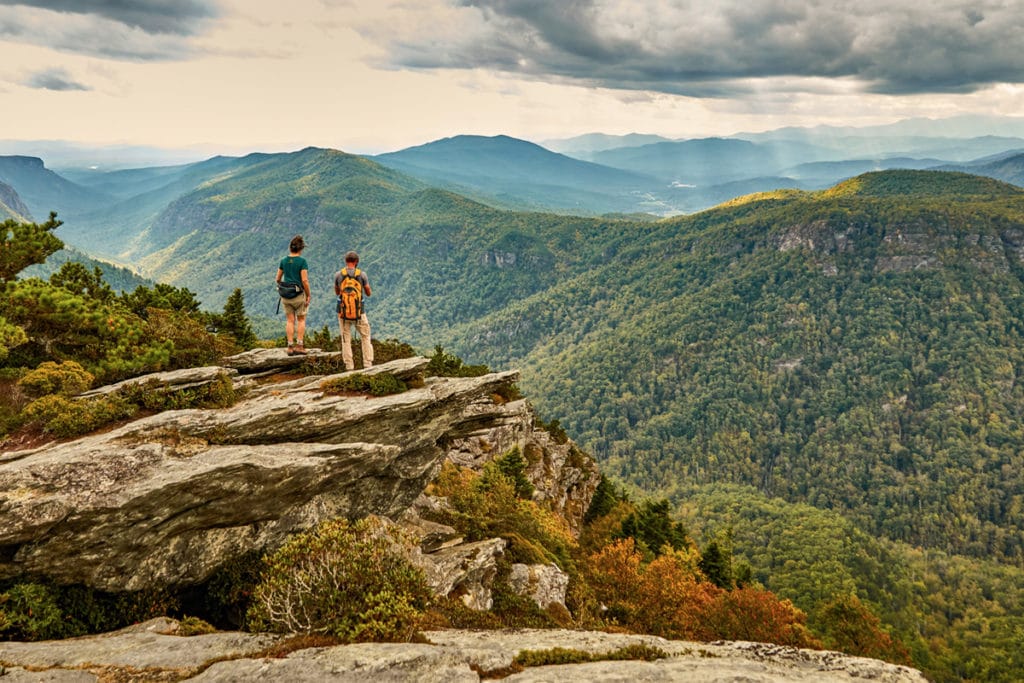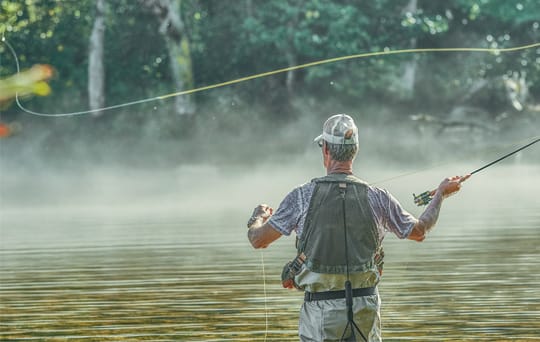October 31, 2019
3 A’s To Building An Outdoor Brand Totem
David Brashears

In a marketplace like the U.S. that is completely oversaturated with advertising and media options for consumers, many have chosen to escape into the wilderness for a break from the noise. Modern society is constantly connected with a regular stream of movies, shows, and advertising vying for our attention and trying to influence our buying behaviors. Getting away from the “machine” for a while can be a restorative way to evaluate priorities and find one’s truth again.
However, even away from the billboards, commercials, and digital ads there is marketing happening out in the backcountry—and it’s a growing market. If you’re an avid backpacker, camper, or outdoorsperson, you’ve probably been keenly aware of the brand flexing happening with those that are gear junkies. Names like The North Face®, Patagonia®, Osprey®, and Arc’teryx® may be seen as much on the Rodeo Drive and the hip dispensary bars of Boulder, CO, but they built that name out in the untamed wildernesses around the world. People wear these brands to express their intrepid spirits and individualism.

The good news is that, building a brand in this way, there are huge returns on the investment! According to data from NPD Group Inc., a marketing analytics firm, the overall fashion apparel industry was down 4% in the U.S. However, the sports outwear was up 3.2% for the same period. The difference is in market philosophy. These brands are built on three major strategic positions that make their customers more loyal and more outspoken than other apparel segments. Let’s take a look at what they’re doing, and how you can win your own segment of the market.
Advocacy
The first area that has long set the top outdoor adventure brands apart from traditional brands is their open commitment to conservation and environmental advocacy. These brands have centered their brand position on being a protector of the wild spaces around the globe. Outdoor brands were some of the first to openly partner with their customers with a promise to designate a percentage of every sale to be invested in causes and organizations that support environmental conservation and corporate social responsibility. In many cases, these brands invite their customers to participate directly with their teams at charity and volunteer work events in National Parks and protected areas.

Patagonia is a prime example of this brand model, having created their own internal organization to help coordinate important environmental support, a group called The Activist Company. On their site they share their vision for this program;
The Activist Company
We believe the environmental crisis has reached a critical tipping point. Without commitments to reduce greenhouse gas emissions, defend clean water and air, and divest from dirty technologies, humankind as a whole will destroy our planet’s ability to repair itself. At Patagonia, the protection and preservation of the environment isn’t what we do after hours. It’s the reason we’re in business and every day’s work.
Their model is not just a yearly investment in other organizations, but a holistic approach to corporate culture. The program covers overall brand mission vision, environmental grants and support for specific global environmental grassroots initiatives, corporate partnerships with like-minded companies, employee activism support, and brand-directed environmental campaigns.
This level of transparent commitment to protecting the outdoor spaces their products are designed to encourage customers to explore gives tremendous opportunity for brand adoption at a personal level for their customers. When a brand can make a promise of re-investment in supporting causes that are core issues for their customers, they feel less like a product manufacturer and more like a consumer partner.
Having responsible sourcing practices and fair trade certification—which assures consumers that product materials are being sources in ways that protect global cultures and environmental resources—also provides peace of mind for buyers who want their money to have a positive impact.
All these advocacy efforts allow a brand to move away from the commodity product model that hangs on a constant margin race to make products cheaper and quicker, to a proposition where they don’t have to apologize for higher prices.
Aspiration
One of the core things that set outdoor brands is the promise of adventure. Sure, most of the people you see at the local coffee shop in their high tech The North Face puffer jacket are probably not going to be doing an arctic expedition of climbing Kilimanjaro. However, when they make those investments into apparel from premium outdoor brands, the assumption is they can do those things.

There’s an added expectation of quality and durability when a consumer spends the extra money on a quality branded piece of outdoor apparel. Being seen in the best brands—whether in the backcountry or at the local bar—is a point of pride for many consumers. These products become the lux brands for the “anti-materialistic” counter culture that goes along with outdoor adventure. Whether they admit it or not, people notice when you are wearing a North Face jacket, rather than a cheaper brand—and they assess your capabilities accordingly.
How do brands curry this aspirational position for their products? They invest heavily in experiential media. Just go the The North Face’s YouTube channel and take a quick look at their library of videos. Every third or fourth video is going to be a video of some grand adventure in an exotic location where athletes are pushing themselves to the limits to earn world-record accomplishments. These are high production, cinema-quality films that are shot by specialized adventure directors and teams. They feature musical scores by top artists that are relevant to outdoor adventure culture. Watching any one of these videos just makes someone want to go have one of these adventures. Many people will never be able to do these amazing adventures, but having gear that they’ve seen do them will make a person feel connected to the accomplishment.
Sure, many smaller outdoor retail brands may not have the budget to back one of these expeditions to a far off area. That doesn’t mean they can create solid experiential media that aligns with their target consumers however. A brand should always start locally. Partner with gifted local adventurers and support local events that align with their brand promises. Become the local expert, and build content that draws curiosity and desire to share in the adventures you can aspire to.
Activation
The third “A” is where things get really interesting for an outdoor adventure brand. When a consumer buys a quality piece of outdoor equipment, their goal is to have an experience they’ve not had before. They want to be assured that the product will help them attain something they desire.
Outdoor brands can open up a whole new world for young, or inexperienced, adventurers to go out and push themselves. Creating a brand promise that products can help them reach experiential goals is a powerful influence on a consumer that is tied to the daily responsibilities of life. A good outdoor adventure brand campaign is like a ticket to freedom.
Activation is also a sense of self. It drives a consumer to embrace their independence from a hectic and suppressive social reality. As discussed earlier, most people want to escape the aggressively materialist world of consumerism, and have a genuine experience. The brands that will win these consumer’s favor are those that are sincerely transparent and committed to creating products that are built with quality in mind, rather than profitability.

Partnering with an agency that can help craft a sincere story around your brand that aligns with a target audience is critical. It’s not just about creative ability, strategic intelligence, or production quality, it’s about understanding the mentality of an adventurer and creating an invitation to partner with a brand. There is a fine line between creating engaging brand experience, and coming off as just another advertising campaign. Great agencies can walk the line and lead a brand to the rarified air of true consumer partnership.
If you’re ready to start planning your brand’s big adventure, Creative Energy would love to be part of the expedition. Our agency’s promise is “we build cult brands,” and our work speaks for itself. Reach out at your convenience, and our team will help you understand our unique capabilities, and why we chose to do world-class work in the foothills of the Appalachian Mountains. We look forward to sharing your adventure.
Contact David Brashears, our Director of New Business, to schedule a call today.
Get insights delivered straight to your inbox.